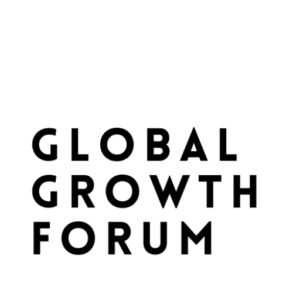The 3 percent fiscal deficit target has long been a cornerstone of fiscal policy in many countries, particularly within the context of the European Union’s Maastricht criteria and India’s fiscal framework. The target is designed to ensure that governments do not excessively borrow and spend, thereby maintaining economic stability and ensuring sustainable growth. However, the appropriateness and inflexibility of this target in the face of evolving economic realities have sparked considerable debate. This article explores the origins of the 3 percent target, its impact on economic policy, and whether it remains a sacrosanct benchmark or a constraint that needs re-evaluation.
Origins of the 3 Percent Target
The 3 percent fiscal deficit target was popularized by the Maastricht Treaty, which established convergence criteria for European Union (EU) member states aiming to adopt the euro. The target aimed to create a stable economic environment by limiting the amount of deficit each country could run, thus preventing excessive debt accumulation that could lead to financial instability.
In India, the 3 percent target was adopted with the passage of the Fiscal Responsibility and Budget Management (FRBM) Act of 2003, which aimed to improve fiscal discipline by setting targets for reducing the fiscal deficit and public debt. The intent was to create a more predictable fiscal environment and foster investor confidence by committing to a path of fiscal prudence.
The Rationale Behind the Target
The rationale for setting a 3 percent target is multifaceted:
- Debt Sustainability: Limiting fiscal deficits helps ensure that governments do not accumulate unsustainable levels of debt. Excessive borrowing can lead to high interest payments, crowding out private investment and potentially leading to a debt crisis.
- Inflation Control: By capping deficits, the target helps control inflationary pressures that can arise from excessive government spending financed by printing money.
- Investor Confidence: A clear fiscal target signals to investors that the government is committed to sound fiscal management, thus encouraging investment and lowering borrowing costs.
- Economic Stability: A predictable fiscal policy contributes to overall economic stability, reducing the likelihood of sudden fiscal adjustments or austerity measures that could disrupt economic growth.
Challenges and Criticisms
Despite its intended benefits, the 3 percent target has faced significant criticism and challenges:
- Economic Cycles: The 3 percent target is a fixed benchmark that does not account for economic fluctuations. During periods of economic downturn or recession, rigid adherence to the target can exacerbate economic problems by forcing governments to cut spending or raise taxes at the worst possible times.
- Development Needs: For emerging economies and developing countries, such as India, the 3 percent target may be too stringent given their need for substantial public investment in infrastructure, education, and health to support growth and development.
- Public Investment: The emphasis on maintaining a 3 percent deficit can lead to underinvestment in critical public infrastructure and services, which can hinder long-term economic growth and development.
- Flexibility Issues: The rigidity of the target can limit the government’s ability to respond to unexpected economic challenges, such as global financial crises or pandemics, which require flexibility in fiscal policy.
- Macroeconomic Impact: A strict focus on the fiscal deficit can overshadow other important macroeconomic indicators such as the quality of public spending, economic growth rates, and social outcomes.
Case Studies and Real-World Adaptations
Several countries have faced challenges in adhering to the 3 percent target and have adapted their policies accordingly:
- European Union: During the Eurozone crisis, several member states, including Greece and Italy, struggled to meet the 3 percent target, leading to debates about the feasibility and flexibility of the Maastricht criteria. In response, the EU introduced measures to allow for more flexibility in fiscal rules, including the Stability and Growth Pact’s “preventive” and “corrective” arms.
- India: India has faced difficulties in maintaining the 3 percent fiscal deficit target due to the need for substantial public investment and the economic impact of events such as the COVID-19 pandemic. The Indian government has occasionally relaxed the target to allow for higher spending to support growth and recovery.
Re-Evaluating the Target
Given the evolving economic landscape, there is a growing consensus that the 3 percent fiscal deficit target should be re-evaluated. Policymakers and economists argue for a more nuanced approach that considers:
- Economic Context: Fiscal targets should be flexible enough to accommodate economic cycles and unforeseen events. A counter-cyclical approach, where deficits are allowed to increase during downturns and decrease during booms, may be more effective.
- Investment Needs: The target should not undermine the ability to invest in critical public infrastructure and social programs that are essential for long-term economic growth.
- Quality of Fiscal Policy: Emphasis should be placed on the quality and effectiveness of public spending rather than just the size of the deficit. Ensuring that public funds are used efficiently can mitigate some of the risks associated with higher deficits.
- Debt Dynamics: The focus should shift from rigid deficit targets to sustainable debt management, taking into account factors such as interest rates, growth rates, and debt servicing costs.
Disclaimer: The thoughts and opinions stated in this article are solely those of the author and do not necessarily reflect the views or positions of any entities represented and we recommend referring to more recent and reliable sources for up-to-date information.









